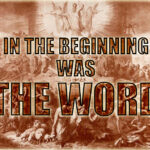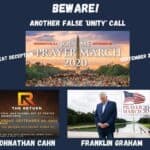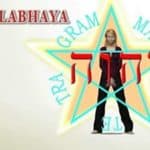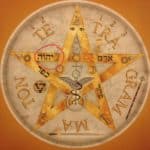This BiblicalIntegrity.org article examines the claims of the “Shemitah” at length and is also included on the page: Blood Moons and Shemitahs Deception.
The Mystery Of The Shemita: Is It Real?
The Mystery of the Shemitah by Jonathan Cahn (Lake Mary, Florida: FrontLine, Charisma Media / Charisma House Book Group, 2014) 275 pp. paper 16.99
_________
The Harbinger by Jonathan Cahn became the #1 Christian book of 2012, set publishing records, reached publishing milestones and propelled the author to a very high-profile position on the national and even internat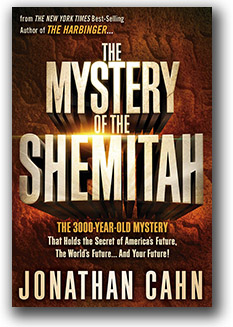 ional stage. Because The Harbinger was riddled with biblical errors, theological flaws and historical misrepresentations, what started out as a 2-3 page book review, quickly turned into a book-length response and led to The Berean Call publishing my first book, The Harbinger: Fact or Fiction?
ional stage. Because The Harbinger was riddled with biblical errors, theological flaws and historical misrepresentations, what started out as a 2-3 page book review, quickly turned into a book-length response and led to The Berean Call publishing my first book, The Harbinger: Fact or Fiction?
On September 2, Jonathan Cahn’s third book, The Mystery of the Shemitah was released to book retailers and was already ranked very high at its debut just on pre-orders alone. As can be seen from the current rankings on Amazon.com, it is clear that The Mystery of the Shemitahneeds to be carefully examined to determine if the errors inThe Harbinger have been corrected or perpetuated in this new volume.

Although I have already done five interviews discussing this book, the article below is the first evaluation in writing to appear on the ABI website. I trust that you will take time to carefully consider my concerns and that you will feel free to contact me with your thoughts, either positive or negative. (If you have trouble posting a comment, please send me an email to let me know.)
And finally, my purpose for evaluating and critiquing The Mystery of the Shemitah is two-fold:
First, because so many people were influenced by The Harbinger and because this new book is already a best-seller, the Body of Christ needs to see that there is another side of the story that might not be completely obvious to some. And even for those who might sense something isn’t quite right, many won’t really work through the sometimes slow and often laborious task of carefully checking to make sure everything is correct.
Second, just as one of my goals in writing The Harbinger: Fact or Fiction? was to model the process of discernment, the same is true of this article. First and foremost, discernment involves checking everything against the Word of God to make sure all of the arguments, theories and claims are biblically sound. And then, beyond the biblical side of things, discernment also frequently involves evaluating the logic of arguments, the veracity of assertions from a historical perspective, and even the proper use of statistics which can be framed such that the true picture is obscured and hidden from the reader, even if unintentionally.
_________
SUMMARY
The Mystery of the Shemitah, which went to its second printing the day it was released, builds on the concepts and theories Jonathan Cahn first presented in The Harbinger, particularly those in the chapter also titled “The Mystery of the Shemitah.” The author’s theory is that God has visited warnings and / or judgment against the United States according to a seven-year cycle going back many decades. Although this reviewer agrees that America is deserving of God’s judgment and a call to repentance is definitely in order, the foundational premise of this book is biblically flawed from the outset. The Shemitah (Jewish Sabbath year) was an obligation given specifically and exclusively to the nation of Israel, and there is no biblical support for the idea that God would either require any other nation to observe the Shemitah year or that He would impose a Shemitah-type judgment according to a seven-year cycle on any nation, including Israel itself. Beyond this, the Shemitah, being a Sabbath and an integral part of the Law of Moses, was completely fulfilled in Christ and is no longer in operation (even it actually did affect other nations prior to the Cross).
Furthermore, none of the overwhelming number of assertions and fact-claims throughout the book concerning economic trends, financial statistics and historical events are documented whatsoever, raising the question of the source of the author’s information, the accuracy of that information, and why this most basic and necessary aspect of any research-based non-fiction book is completely missing. The burden of proof for such assertions and claims should never be on the reader if an author is to be taken seriously. In addition, the integrity of any publisher is rightly called into question when an author doesn’t cite his sources.
The bottom line is that, unfortunately, the significant problems that plague The Harbinger have possibly been exceeded in this book and so should give pause to anyone who takes the Word of God seriously.
_________
BACKGROUND
In the Law of Moses, God required that His chosen people, the Children of Israel, cease from their work on the seventh day of each week (the Sabbath). In addition to the Sabbath day, the Lord also instructed Israel to observe every seventh year as a Sabbath, as well. During the Sabbath year, the Israelites were to allow the land to rest from planting and harvesting and to allow whatever came up on its own to be picked by the poor among them. (Exodus 23:10-12;Leviticus 25:1-7) And just as God had provided a double-portion of manna on the 6th day of each week while the Israelites were in the wilderness so they would not have to work on the Sabbath, the Lord actually tripled the harvest in the sixth year to carry them through to the harvest in the first year of the new seven-year cycle.
Not only was it an agrarian cycle, but it was an economic one, as well. On the last day of the Sabbath year, lenders were required to forgive or “release” (the meaning of “Shemitah”) borrowers from the obligation of repaying their debts. (Deuteronomy 15:1) Over time, the last day of the Sabbath year and the year itself came to be known as the “Shemitah” (pronounced sh’mi’-tah). Although one would naturally suppose that such a system would wreck an economy and the lives of those who possessed enough to be lenders rather than borrowers, once again keeping the Lord’s command in this matter would be a source of blessing rather than hardship:
…for the Lord will greatly bless you in the land which the Lord your God is giving you to possess as an inheritance—only if you carefully obey the voice of the Lord your God, to observe with care all these commandments which I command you today. For the Lord your God will bless you just as He promised you; you shall lend to many nations, but you shall not borrow; you shall reign over many nations, but they shall not reign over you. (Deuteronomy 15:4a-6)
Among other serious sins, the Israelites disobeyed the Lord’s command not to take foreign wives who came from nations where idolatry and the worship of false gods was practiced (Deuteronomy 7:1-5). As a result, the idolatrous practices and pagan worship of those nations became an integral part of Israel’s own religious practices. Consequently, the worship of the one true God was largely abandoned and the Law of Moses was largely ignored. By the end of the sixth century B.C., Israel had failed to observe a total of seventy Sabbath / Shemitah years.
In judgment against Israel’s pervasive and persistent sin, God used the Babylonian empire to execute judgment upon the southern kingdom of Judah beginning in 606 B.C., just as He had used the Assyrians over a century earlier against the northern kingdom of Israel. In addition to ultimately leveling Jerusalem and destroying the temple, the Babylonians carried away large numbers of Israelites into captivity—a captivity that lasted for 70 years—one year for each Sabbath year that the nation had failed to observe the Shemitah. Thus, because of this God-imposed Shemitah with the Israelites being in captivity in Babylon, the Promised Land “rested” for the same number of years that the Israelites had failed to allow the land to rest as the Lord had commanded (2 Chronicles 36:20-21).
_________
EVALUATION
Introduction
The fundamental premise of The Mystery of the Shemitah is that not only did God require the nation of Israel to observe the Shemitah / Sabbath year, but that there is also a mystery connected to the Shemitah such that there is a seven-year cycle woven into the very fabric of history and the order of the universe—a cycle that can and does affect other nations and even the entire world. According to Jonathan Cahn, this mystery manifests itself through various calamities, including natural disasters, wars, and financial crises that tend to occur according to this seven-year cycle on the Hebrew calendar when God is trying to get the attention of a nation and warn her of impending judgment.
Based on his unbiblical view of the United States in God’s program, Cahn argues that the Lord continues to follow the same seven-year cycle in His dealings with America that He established for ancient Israel in the Law of Moses. And just as God imposed a “Shemitah” upon the nation of Israel as a judgment, forcing the land to rest for seventy years, likewise He has been visiting calamities upon this country as warning of impending judgment through stock market crashes, economic crises and various other cataclysmic events—all because of themystery of the Shemitah.
Throughout the book, the author goes to great lengths in an attempt to demonstrate that this has been going on for at least a century. And as he did in The Harbinger,Jonathan Cahn contends that the most recent cluster of devastating events began with the terrorist attacks of 9/11/2001 on the World Trade Center towers, the Pentagon, and United Airlines flight #93 (which he collectively refers to as “the first shaking”). Furthermore, Cahn claims that the mystery of the Shemitah has been working in conjunction with what he calls the “Isaiah 9:10 Effect” and has manifested itself as a “second shaking” with the precipitous fall of the stock market on the last day of the Shemitah year in both 2001 and 2008, according to the modern Hebrew calendar.
However, before one gets too excited or becomes convinced that “Cahn has done it again” (as some have put it), a number of things need to be considered. Unfortunately, there are so many significant issues in this new book that rival or surpass the problems in The Harbinger, it seems that The Mystery of the Shemitah may be an even more fragile house of cards than Cahn’s first book.
Discernment Tip: Strive to understand what the author is saying well enough to be able to summarize it in a few sentences.
When working through a book or an article, the first step in exercising discernment is to read the work all the way through and simply highlight or otherwise mark areas that are not clear, things that strike you as possible problems, things that are obviously erroneous, weak arguments and things that need to be fact-checked. However, the first time through, don’t worry about getting into the details or formulating some sort of response to issues of concern.
Then after completely reading it for the first time, jot down a few notes concerning your overall impressions and two or three major “take-aways” that reflect what you believe to be the author’s primary thesis, his major arguments, and his overall conclusions. After this, try to summarize the entire piece in just a few sentences.
Now you’re ready to go through it a second time and begin the process of more careful evaluation.
________
The Theory of Shemitah Cycles in America
That God expects or will impose a Shemitah upon any nation other than Israel has no scriptural basis. Neither do the Scriptures provide any indication that the Shemitah is some sort of universal principle that operates throughout or even at various times in history. Yet, in spite of this, Jonathan Cahn argues that America has been subjected to the mystery of the Shemitah repeatedly over at least the last century, following the modern Hebrew reckoning of Sabbath / Shemitah years. However, this does not follow the ancient pattern to which he appeals for support since God has never subjected Israel to the operation of some mysterious universal force according to seven-year cycles.
In The Mystery of the Shemitah, the author uses many graphs to depict America’s economic cycles, with significant rises in the S&P 500 during bull markets, which are inevitably followed by sometimes precipitous declines or crashes leading into a bear market. He further suggests that if one were to similarly graph ancient Israel’s economy, because of the mystery of the Shemitah, it would track very closely with America’s economy, and exhibit similar trends with sharp increases and rapid declines as Israel observed the Shemitah every seven years. This theory is without merit on multiple counts.
First of all, during Israel’s roughly 800 years of existence, between the time they entered the Promised Land around 1400 B.C. and Babylon’s first attacks on the southern kingdom in 606 B.C., the nation did not observe seventy of the required Sabbaths. Yet, in spite of this protracted period of disobedience, including the Sabbath-year laws, God did not impose a Shemitah upon them until the Babylonian captivity. In contrast, Cahn contends that God has imposed a Shemitah on America for many or most seven-year cycles going back to at least the beginning of the 20th century. Or at the very least, because America has turned from God, the nation has been subject to the natural consequences of the mystery of the Shemitah. Clearly, Cahn’s theory does not fit the biblical pattern.
Secondly, Cahn is wrong when he suggests that when Israel did observe the Shemitah, the nation’s economy experienced crashes or at least sharp economic downturns for a period of time following the last day of the Shemitah year (which Cahn refers to as “the Shemitah’s wake”). His theory is that because debts were wiped clean and there had been no planting or harvesting during the Sabbath year, Israel must have been subject to wildly swinging economic cycles of seven years each that tested Israel’s faithfulness.
However, this theory is without merit on biblical grounds. Rather, the Scriptures indicate that the Shemitah was a blessing in every respect with no downside whatsoever. While Cahn does acknowledge that the Shemitah was to be a blessing, he then turns around and argues that there was much economic hardship as the nation recovered from the effects of the Shemitah, because of both the release of debts and the lack of a crop during the Sabbath year—something that he must claim in order to set the stage for his theory concerning America.
In sharp contrast to Cahn’s unbiblical notions, there is no scriptural evidence that ancient Israel experienced any hardship at all because of the Shemitah. Rather, quite the opposite was true because, as previously noted, in the sixth year God actually tripled the harvest so that the Israelites would not have to work in the fields during the entire Shemitah year. Furthermore, the nation also had more than enough to carry the Israelites all the way to the harvest season in the first year of the next seven-year cycle. Logically, this means that the Israelites would have been free to do other things, including perhaps selling some of the extra produce, which could have arguably allowed them to pay down their debts before the last day of the Shemitah year.
Another important point to consider is that ancient Israel’s economy was not based on deficit spending and huge debts as is true in America today. In 2014, almost everyone has debt of some sort—and in many cases the debts are staggering. Consequently, if those debts were wiped off the books, the entire U.S. economy would collapse.
In contrast, there was most likely very little debt in ancient Israel as compared to America today. There was no banking or lending system backed by the FDIC in ancient Israel, meaning that all loans were personal. Again, just common sense suggests that if potential lenders knew they had to recover all their money before the end of the next Shemitah year or forfeit it, there very likely wouldn’t have been very many people who would have been willing to extend credit and personal loans to others.
Beyond this, unlike today, only those who were poor were borrowers and only those who could afford to write off debts were able to give loans in the first place. In fact, there were a couple of provisions in the Shemitah laws for not wiping debt off the books—if a borrower was not an Israelite and if the entire country was prosperous:
Of a foreigner you may require it; but you shall give up your claim to what is owed by your brother, except when there may be no poor among you; for the Lord will greatly bless you in the land which the Lord your God is giving you to possess as an inheritance—only if you carefully obey the voice of the Lord your God, to observe with care all these commandments which I command you today. (Deuteronomy 15:3-5)
So, once again, Cahn’s theories and arguments simply have no biblical or logical merit.
Going back to the imposed-Shemitah: God’s reason for linking judgment to an imposed-Shemitah upon Israel was because they had failed to observe the required Sabbath years. However, there is no biblical basis for suggesting that God would impose a Shemitah-type judgment upon any nation that was not obligated to observe the Sabbath year in the first place. Therefore, no matter what has happened to America over the last 100+ years, it cannot be linked in any biblical way to the Shemitah, even if it were true that economies tend to go through roughly seven-year cycles.
If Jonathan Cahn were right about the mystery of the Shemitah, then economists almost certainly would have noticed and been writing about this precise seven-year cycle long before God “revealed” it to the author. Tremendous fortunes could have been made by savvy investors who know how to play just such market cycles. However, preliminary research indicates that while some economists have suggested that economies may naturally follow a cycle of a bit less than seven years to as much as ten years, there is no universal agreement on this point. This stands in sharp contrast to the precise seven-year Sabbath cycles in ancient Israel.

Since World War 2, we’ve already had 11 recessions. And if you go back another hundred years, you’ll see the same pattern. Those dates in red show the bottom of each recession. Now look: how far they spaced apart?
Would you agree: another recession is inevitable? It’s only a matter of when. In the past, recessions occurred at intervals of 7-10 years (barring a few that came a little quicker).
It’s almost like summer hurricanes in the Caribbean. We know they’re going to happen. We just don’t know when and where exactly. Fortunately, we’ve developed a good system of hurricane warnings.1
Obviously economic cycles of some duration are inevitable because bull markets don’t last forever and neither do bear markets. And that economic cycles might generally have some average length is not necessarily surprising either. However, to conclude that the mystery of the Shemitah is behind these, when the Shemitah cycle is exactly seven years, but the length of the modern cycles varies by as much as three years or more just defies common sense.
All of this raises many questions of which the following are just a few:
- How is it possible that God has not been imposing Shemitah judgments upon Israel and the Jewish people for two millennia, when they are the only ones ever obligated to observe the Shemitah year?
- Why is it that, while ignoring Israel’s ongoing failure to keep the Sabbath year, the Lord has been using seven-year Shemitah cycles as warnings or judgments upon America over the last 100 years or so, even though the United States has no obligation to observe the Shemitah?
- With no scriptural reason for anyone to think that the mystery of the Shemitah might be influencing America’s economy, how could it possibly be considered to be a biblical warning?
- If the mystery of the Shemitah affects the world, does this mean that every country experiences the same seven-year economic cycles, or is it that only America suffers when even Israel does not?
- If the mystery of the Shemitah is always at work, then how can it be determined when God is issuing a warning and when He is not?
- If there are no cataclysmic events connected to a particular Shemitah cycle, does that mean God is pleased with the way things are going?
- What is it that determines that one economic cycle might be six and a half years, while another might be eight years—and why are they not always exactly seven years so that a precise pattern might be recognized by serious believers who know the Bible well?
Furthermore, although Israel was to be blessed by the Shemitah through God’s faithful provision, according to Cahn’s theory, America has experienced nothing but judgment related to the Shemitah. Once again, none of this makes any sense from a biblical or logical perspective.
And finally, as noted previously: The Shemitah, being a Sabbath year and an integral part of the Law of Moses, was completely fulfilled in Christ and is no longer in operation (even it actually did affect other nations prior to the Cross).
Discernment Tip: Context isn’t the main thing—it’s the only thing.
Always take care to understand any passages cited to support a given point in their original context. Of course there is the literary context of the text itself, which includes the verses leading up to and following the passage being considered. However, just as important is the historical context, which includes the author, the recipients, the time period in history and various cultural factors.
In the case of the Shemitah, the historical context is supremely important. The revelation and commandments concerning the Sabbath years were given specifically and exclusively to the nation of Israel. They were the recipients of the revelation given to the author who is Moses. Furthermore, the period in history was the era of the Law of Moses, which extended from the giving of the Law on Mt. Sinai in the middle of the 14th century B.C. to Christ’s death on the cross around A.D. 30. So, the Shemitah laws were given exclusively to a specific people, during a limited period of with a clear beginning and ending, with no indication whatsoever that there was an underlying mystery affecting the nation or that God would use a mystery of the Shemitah when dealing with any other nation but Israel.
_________
“The Revelations Came Rapidly…”
The suggestion that God has been revealing all of these things to Jonathan Cahn alone is quite problematic. In an appearance on the Jim Bakker show in August of this year, Jonathan Cahn stated concerning the writing of The Mystery of the Shemitah, “This is what came and the Lord did it—and He did it rapidly, as with The Harbinger—the revelations came rapidly and it went forth,”2 while gesturing toward heaven, obviously indicating that God had revealed these truths to him. And, just as with The Harbinger, this essentially puts him in the position of being an end-times prophet who is now receiving new revelation from God and revealing a mystery that has never been seen by any biblical scholar of the last 2000 years. And as typically happens, he continues to be referred to and introduced as “an end-times prophet.” If this were simply in reference to him being one who boldly proclaims God’s word, this would not be a problem. However, this is specifically related to him being a revealer of mysteries never before seen in history or the Bible.
This also raises yet another important question: How is it that God is just now sending a warning of judgment through a modern-day prophetic voice after the fact? The Harbinger was published in 2012, over three years after the stock market crash of 2008, over ten years after 9/11 and close to 100 years after some of the events Cahn ties to the mystery of the Shemitahoperating through significant historical events, such as the Balfour Declaration in 1917. As with his other theories, this makes no sense biblically or logically—and it definitely does not follow any pattern seen in the Scriptures concerning how God deals with mankind.
Discernment Tip: Beware of claims of newly discovered truth in the biblical text that no one has ever seen before.
While it is true that we can never fully plumb the depths of the Scriptures in terms of implications and applications, the text says precisely what it has always said. Some have attempted to defend Jonathan Cahn by saying that he is only finding new applications—which would not be a problem. However, as what he says in writing, or when teaching or in his various appearances is carefully examined, it is difficult to conclude that his various theories, various aspects of those theories and his conclusions go beyond simply application issues and extend to the intent of the biblical author(s) (both divine and human) and the meaning the author(s) intended to convey. For example, it is impossible to conclude on the basis of any passage or combination of passages that anything such as “the mystery of the Shemitah” even exists as a principle that operates behind the scenes throughout history.
_________
America as the Second Israel
In order to make his case that the mystery of the Shemitah has been manifesting itself in the United States for decades, Jonathan Cahn must necessarily treat America as a sort of “second Israel”—which is precisely what he did in The Harbinger as was demonstrated in The Harbinger: Fact or Fiction? (despite protests to the contrary). That he has done this again inThe Mystery of the Shemitah can be seen in two of the section headings in chapter 7, which are titled “The Israel of the New World” and “The Fall of the Second Israel.” And although Cahn has consistently protested that, being a Jewish believer in Christ, there is no way that he could or would hold to Replacement Theology, at the very least he seems to hold to something that could perhaps be called “Parallel Israel Theology” or “Secondary Israel Theology” (terms coined by this reviewer).
In the section “The Israel of the New World” Cahn writes:
Most would find it surprising to learn that America was consciously, intentionally, and specifically founded and formed after the pattern of ancient Israel. Its founders saw it as a new Israel, the Israel of the New World. It was their exodus from Europe like the Hebrew exodus from Egypt. The New World was their new promised land, and the Massachusetts Bay Colony was their New Jerusalem. 3
There is no nation in the modern world so deeply linked to ancient Israel as America. There is, therefore, no stage or platform on earth so well suited for the manifesting of the mystery of the Shemitah as America. 4
The primary basis for his view is the fact that the founders of this country, from the Puritans and Pilgrims to the Founding Fathers, viewed America as the new Israel and so dedicated the new country to God’s purposes. However, any objective evaluation of America’s history reveals that although God’s name was invoked by the Founding Fathers at various points, it is equally true that the paganism of Freemasonry is deeply embedded into the very foundation of this country, as well. This is evident wherever one looks in the nation’s capital—to the degree that in the dome of the Capitol building, George Washington is depicted as becoming deity as he is received into heaven.5
Furthermore, while Cahn gives a lot of weight to George Washington’s prayer in St. Paul’s Chapel near the location where the World Trade Center towers once stood, he never tells his readers that the procession to the chapel was a Masonic procession that has been re-enacted for years by Freemasons in New York City.6 Neither does he let his readers know that Washington was sworn in on a Masonic Bible,7 or that the one who administered the oath of office was a Grand Master Freemason,8 or that a famous portrait of Washington depicts him in Masonic garb,9 or he that he was appointed as the charter Master of Alexandria Lodge #22 in Virginia,10, or that he was buried with a Masonic ceremony.11 The god of many of the Founding Fathers was apparently not the God of the Bible, whether or not they quoted the Bible or made reference to the Creator.
Discernment Tip: Despite the title and words of the song “Every Promise in the Book is Mine,” this really isn’t true, and if we fail to recognize that certain things only concerned ancient Israel, our understanding of the entire Bible will be fraught with problems.
While the entire Bible is the inspired Word of God and is profitable for doctrine, reproof, correction, and instruction in righteousness (2 Timothy 3:16), not every truth, promise or principle is equally applicable in the same way as it was for the original recipients. For example, God promised Abraham that through him all nations would be blessed (Genesis 12:3). And we also know that Abraham became the model of faith for believers of all generations (Romans 4:2-3). We can easily see all sorts of applications for these truths. However, God also promised Abraham that his descendants would inherit a large piece of land (Genesis 13:14-15)—and there is no direct application of that truth to all believers. Rather, the application is indirect and concerns God’s faithfulness, but does not extend to all believers inheriting the actual physical land that was promised to Israel or any other geographical place.
God dealt with the descendants of Abraham through Isaac and Jacob in a unique and exclusive way and this cannot be extrapolated to any other country, even if America’s founders saw it as a “Second Israel” and dedicated this country to God’s purposes. There is no scriptural basis for concluding that God would ever deal with America on the basis of the Shemitah, which was given to Israel alone. And any attempt to do so is to read a meaning into Scripture and theorize an application that the original (divine and human) authors never intended or would even have imagined.
_________
The Hebrew Calendar
Evidence suggests that the modern Hebrew calendar is out of sync with that of Moses’ day—perhaps by a significant amount. Although according to the modern Hebrew calendar, the last year in the present Shemitah cycle begins on September 25, 2014, according to the Jewish Encyclopedia, the actual Shemitah year is disputed. 12
Dr. David Reagan has written an interesting article concerning the calendar problem in which he cites an authority on the subject who deals with this issue in the book Jewish History in Conflict:
The calculation of the years of the Jewish calendar, according to the Talmud, was done in the 2nd Century A.D. by Rabbi R. Yose. His rabbinic chronology is called the Seder Olam Rabbah.13
Since the rabbinical chronology from the time of Creation to the end of the Hebrew Scriptures is relatively clear, the discrepancy between the rabbinical calendar and the Christian reckoning of time relates mainly to the inter-testamental period for which there are no biblical records. This period is referred to by secular historians as “the Persian period.” The Babylonian Empire was overthrown by the Medo-Persian Empire (539 B.C.), and it is the length of the Persian period that is in dispute. The rabbinical chronology says it lasted 52 years (with 34 years of domination over Israel). The accepted chronology of historical experts says it lasted 207 years.
A remarkable new book has recently been published which examines this problem in detail. It is called Jewish History in Conflict.14 The author is a New York attorney and Orthodox Jew by the name of Mitchell First. He studied Jewish history at Yeshiva University’s Revel Graduate School, receiving his M.A. in Jewish history in 1995. He had previously earned a law degree from Columbia Law School in 1982.
The book provides an intriguing survey of what Jewish rabbis have had to say about the calendar discrepancy. He quotes the writings of 105 rabbis and scholars from 882 A.D. to the present, and it is fascinating reading.
In the process, the author proves that the Jewish chronology is flawed and the conventional chronology is the correct one. In fact, the evidence he presents is overwhelming. 13
Being a highly debated issue, it seems unlikely that it will be completely solved to the satisfaction of everyone. Yet, in the context of the present discussion, it does make a difference.
For example, if the actual year is disputed, that also means that it is impossible to determine where the calendar is relative to the seven-year Shemitah cycle as it was established by God around 1445 B.C. Furthermore, attempts to establish when Sabbath years occurred relative to the known date of certain events in the Old Testament have remained inconclusive. And if the modern Hebrew calendar is off, or if the Sabbath-year cycle is off by even one year, then a key component of Cahn’s premise for the entire book is undermined because none of the events cited by the author can be conclusively connected to the biblical Sabbath years of Moses’ day.
Even less certain is the timing of the Jubilee year, which was a special Shemitah year that occurred after seven of the seven-year Sabbath cycles, i.e., in the 50th year. Furthermore, there is no consensus among the rabbis as to whether the Jubilee year was concurrent with the 49th year or whether it was after the 49th year and concurrent with the first year of the next seven-year cycle. To complicate things further, some have suggested that the Jubilee was an intercalary year (a year that is inserted into the calendar), such that the Jubilee cycles were 50 years each. If this is true, which the Jewish Encyclopedia indicates is the majority view among the rabbis, 14 then the seven-year cycle would move later by one year for every 50 years. And besides all this, there are questions concerning exactly when the Jubilee year was suspended (as it is no longer observed). 15
Taken together, this means that it is virtually impossible to know for certain if the Shemitah years are being reckoned according to God’s calendar. Yet, despite all of these difficulties which should be known by a Jewish rabbi, and after acknowledging that no one knows when the Jubilee years are on the Hebrew calendar, Cahn apparently brushes these problems aside and begins discussing the Balfour Declaration of 1917 and the Six-Day War in 1967, claiming that these amount to Jubilee years for the nation of Israel, whether or not they are legitimate Jubilee years in the eyes of God.
Whether 1917 was the actual calendar year of Jubilee or not, we cannot say. But with regard to the two-thousand-year exile of the Jewish people from their land, it was certainly a prophetic Jubilee—a mega-Jubilee, a Jubilee of ages. And it happened to take place in the year following the Shemitah, as ordained in the ancient decree concerning the Jubilee.16
The problem is obvious: Even though Cahn cannot know for certain when the Shemitah cycles actually occur on God’s calendar and even though there is even less certainty concerning the Jubilee, he then proceeds to build his unbiblical case for the mystery of the Shemitah affecting America, and thus, the case that everyone must be ready for the end of the Shemitah cycle in 2015 and the beginning of the next Jubilee year that will follow it.
In an interesting and troubling development, on September 16, 2014, Mark Biltz appeared onThe Jim Bakker Show, and building upon and referencing Cahn’s work on the Shemitah, he and Jim Bakker had the following exchange:
Note: the following does not include everything that was said in this exchange, but nothing is left out that would distort the context or meaning of what is said, and the entire show can be seen at this web address.
Biltz: . . . Go back to Leviticus 25:8-10—this is what Jonathan was speaking about . . . so here we see the significance of the Shemitah year . . . and you see Rosh Hoshanah, you see Yom Kippur and on Yom Kippur…(interrupted by Bakker)
Bakker: But the Rapture has to take place on the trumpet sound day…
Biltz: . . . yeah—I don’t know what year, I don’t get into whether….(interrupted by Bakker)
Bakker (to the studio audience): Now, do ya’ll accept that or not? If you can’t accept that you have never studied the Old Testament—you have no idea of the trumpet—you always say, “oh, He’s coming at the sound of the trumpet. You’ve got to understand that this is the VERY HEART . . .
Biltz: Yes.
Bakker: . . . of ALL God’s teaching in the Old Testament.
Biltz: Sure. It’s all tied to His calendar. . .
Bakker: I believe this is the final [blood moon] tetrad. God is specific. His numbers are ALWAYS the same. Numerology will make you know God. I mean real numbers.
Bakker (several minutes later): So you see . . . (interrupted by Biltz)
Biltz: The Tribulation as a seven-year cycle that will follow the cyclical Shemitah cycle.
Bakker: So—you would feel like maybe we should prepare for the Tribulation (Biltz interrupts)
Biltz: Definitely. I think we have one year to really prepare for what God’s coming [sic]
Jonathan Cahn has been a regular guest on The Jim Bakker Show in connection with both The Harbinger and The Mystery of the Shemitah—in which he makes a connection between the Shemitah and the blood moon tetrad—discovered and popularized by Biltz. Mark Biltz has also been a regular guest on Bakker’s program in connection with his book Blood Moons: Decoding the Imminent Heavenly Signs—and has spoken at Cahn’s church, Beth Israel Worship Center. WND actually billed the weekend he was there in June as “The Harbinger meets Blood Moons.”17
Discernment Tip: Take nothing for granted and be willing to do the hard work to check any and all assertions and fact-claims, even by “experts,” especially if there are other red flags.
Given that The Harbinger was the #1 best-selling Christian book, remaining on the New York Times best-seller list for over two years, Jonathan Cahn is viewed by many as a leading authority on the Old Testament, all things Hebrew and Jewish, Israel, the founding of America, the Lord’s feasts, current events and the end times. For this reason, it is unlikely that all but perhaps a few readers of The Mystery of the Shemitah will ever even think to dig a little deeper to see if the foundational issue of the Hebrew calendar is as certain as it is presented by the author.
This is not mentioned to bring Cahn’s integrity into question. However, everyone brings certain presuppositions, assumptions and knowledge to the table which influences one’s worldview and how the Scriptures, events, trends, statistics, and any number of other things might be interpreted.
_________
What’s in a title? The Mystery of the Shemitah…
Jonathan Cahn has positioned himself as a “revealer-of-mysteries,” many of which he claims no one else has ever seen before. One only need consider the many titles of his messages which contain the word “mystery.” This could be rightly characterized as Jonathan Cahn’s ministry trademark.
However, concerning the biblical Shemitah, there is no mystery—and there never has been. The exact requirements for keeping the Sabbath year were very explicitly revealed by God to and through Moses as recorded in the Pentateuch. The Scriptures never give any indication that there was some sort of underlying mystery or principle that was also in operation. It was all very straightforward and clear.
Furthermore, when God imposed a Shemitah upon Israel through the judgment of the Babylonian captivity, this was not a mystery either. Everything that was happening to the nation of Israel, and why it was happening was very clearly revealed through the prophets. Again, there was never some sort of mystery woven into the fabric of the creation at work.
Bible teachers have long defined a biblical mystery as “something which was hidden in the past, but now revealed.” And the nature of biblical mysteries is such that they can only be known and understood through direct revelation by God through a prophet (and apostles functioned as prophets in the New Testament). For example, in dispensational theology the church was a mystery in the Old Testament, not being foreseen even by the prophets until God revealed it through Jesus and the apostles in the New Testament. Therefore, since Cahn has positioned himself as the revealer of biblical mysteries that have never been seen before, and given that he says that “the revelations came rapidly” as he was writing The Mystery of the Shemitah, he is being viewed as an end-times prophet—not just in the sense of a forthteller, but as a foreteller of revelation. And this is the way he has been frequently introduced for over two and a half years.
Yet, if he really is receiving revelation from God so that he can reveal previously hidden mysteries, this raises some serious questions concerning how God does things. If Cahn is right, not only was America’s relationship to the Shemitah never revealed by God until a couple of years ago through him, but the Lord had also been judging America according to the Shemitah cycle, but with no warning or explanation until after the fact.
This same problem is found in The Harbinger. According to the author, God sent a warning through the terrorist attacks in 2001 but with no corresponding prophetic revelation that this was the “first shaking,” as Cahn puts it, before the fact. And then, according to Cahn, the Lord sent a “second shaking” through the stock market crash of 2008 and the subsequent recession, yet without any warning before the fact. This does not fit the biblical pattern at all. If things had gone according to the biblical pattern, there would have been very specific revelation years in advance that 9/11 was coming if America didn’t turn to God.
Interestingly, Cahn is claiming that what he is now revealing is the expected warning by God ahead of even more calamitous events that will come as God judges this nation. Once again, this makes no sense biblically or logically.
Then there is the matter of the subtitle: The 3,000-Year-Old Mystery That Holds the Secret of America’s Future, the World’s Future, and Your Future!
Now, as the revealer-of-mysteries, Jonathan Cahn adds to the drama of the book’s title by insisting that the mystery he has discovered is both universal and personal in scope, while directly appealing to the national conscience of Americans. Unfortunately, this has the feeling of being little more than sensationalism and marketing hype—and perhaps comes perilously close to “peddling the Word of God.”
Discernment Tip: Always judge a book by its cover.
Although this is contrary to the popular saying, it is extremely important in the process of discernment. Think about all of the things which can be found on the cover: the title and the subtitle, the name of the author and a brief bio sketch, the publisher, often a synopsis or at least clues to the content, and endorsements.
The bio sketch usually includes where the author went to school, past and present ministries, and various accomplishments such as books he or she may have written. Just knowing these things about an author can be invaluable because all of them likely give insight into the author’s beliefs.
The relative trustworthiness of a book can often be determined simply on the basis the publisher. Few Christian publishers will print anything that they don’t agree with, at least in general. Therefore, if a publisher consistently puts out material that is frequently questionable or worse, that tells you something about what might be in the book in question. In the case of The Mystery of the Shemitah and The Harbinger, both were published by Frontline, which is a division of Charisma Publishing—a huge publishing empire that is the purveyor of some of the most unbiblical work of this generation.
Also, if you know that an endorser of a book is known to have questionable or outright bad theology, then that, too, tells you something about the book he is endorsing.
One more thing to consider, though not on the cover, is the book’s foreword. When someone writes a foreword to a book they are giving it their strongest seal of approval to the contents of the book—and they are putting their own reputation on the line. Therefore, you can be sure that the theology of the book’s author and the theology of the foreword’s author is very closely aligned in general terms. Therefore, if you are familiar with the author of the foreword, you already know a lot about the book and its author.
_________
The Blood Moon Tetrad
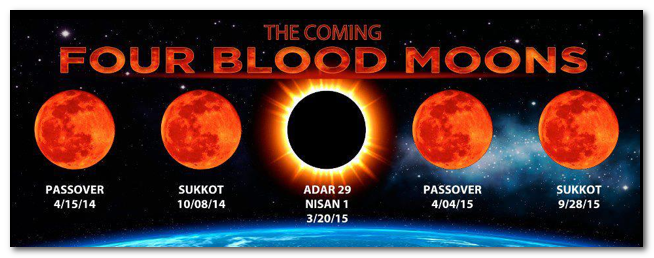
The matter of the “Blood Moon Tetrad” has taken on a life of its own over the past year. For those who may not be aware, a full lunar eclipse is sometimes referred to as a “blood moon” because when the shadow of the earth completely blocks the sun’s direct rays, the moon takes on a reddish or red-orange color, for the same reason that sunsets are also frequently this color (due to refraction of light by the earth’s atmosphere).
A blood moon tetrad is when there are four consecutive full lunar eclipses with no other intervening eclipses. And, interestingly, as they have sometimes in the past, all four full lunar eclipses fall on Jewish feast days (Passover and the Feast of Tabernacles) in the spring and fall of 2014 and 2015.
Because of this, many prophecy teachers have suggested that biblical prophetic passages referring to the sun being darkened and the moon turning to blood (eg., Joel 2:30-31) could find their fulfillment during this current blood moon tetrad (which also includes a full solar eclipse). (I have has addressed this issue extensively in another article on this website, so I won’t go into refuting this notion here.)
Suffice it to say, in The Mystery of the Shemitah, as have others, Jonathan Cahn suggests there may well be a connection between the blood moon tetrad (and solar eclipses) and the supposed Shemitah of 2014-2015. Apart from the many biblical problems with this theory, one of the greatest concerns is the practical consequence of this quasi-date-setting (which is done with the perfunctory caveats that this might not be connected with biblical end time events in order to avoid the charge of date-setting).
The immediate problem is that if people think the Rapture or the beginning of the Tribulation or the Second Coming of Christ is directly connected to these completely natural events, then they don’t have to be concerned with the idea that the Rapture could happen at any moment—which, given human nature, means that some won’t be prepared and will be caught off-guard. For those who are caught off-guard and haven’t trusted in Christ for salvation, they will enter into the Tribulation and experience the worst cataclysmic events this world has ever seen as God pours out His wrath.
Then the longer term problem is that if the blood moons, solar eclipses and Shemitah pass without anything happening, how many will completely turn their back on anyone who teaches on prophecy—or turn their back on the Word of God altogether? We could well be in the last days, or even the last hours of the last days—but God’s timetable is not the same as ours, and Christ could come at any moment—before, during or after the blood moon tetrad.
Furthermore, history shows that when dates are suggested for the end of the world, the Rapture, Armageddon, etc., there are those who become so caught up in it that they quit their jobs, get rid of everything they own, and just wait for the end to come. Even more tragically, as happened with at least one person because of the date-setting of Harold Camping, some may commit suicide.
This may be one reason why Jesus told his disciples that no one knows the day or the hour, not even the angels or the Son of Man himself (Matt 24:36, 44 Mark 13:32).
Discernment Tip: Think. Think biblically and think logically—because the two aren’t at odds for the believer.
The Lord has given us His word to know and understand what He has done in the past, what He is doing in the present and what He will do in the future. He has also given us a brain and the ability to reason. So, let’s put this altogether and consider just three things about the blood moon tetrad biblically and logically:
- The present blood moon tetrad is a completely natural and predictable event. NASA has calculated the precise location and the exact timing (to the second) of every lunar and solar eclipse for thousands of years in the past to thousands of years into the future. Since Jesus is the Creator, that means He is the one who established this precise timetable and geometry of the orbits of the earth, moon and sun in the very beginning. Then how is it that He couldn’t have figured out the mystery of the Shemitah and its convergence with the blood moon tetrad long before Cahn and Biltz did? Yet, He told his disciples, “But of that day and hour no one knows, not even the angels in heaven, nor the Son, but only the Father.” (Mark 13:32)
- The wording of Joel 2:30-31, (and quoted by Peter on the day of Pentecost (Acts 2:19-20)) suggests that the darkening of the sun and the moon turning blood red are simultaneous events. However, if Cahn and Biltz are right about the present blood moons being fulfillment of this prophecy, there is a problem: full solar and full lunar eclipses can only occur exactly two weeks apart, because during a solar eclipse, the moon is between the earth and the sun, and during a lunar eclipse, the earth is between the moon and the sun.
- Consider all the times that the Lord used nature as a warning of judgment or as the judgment itself—for example, in the past there was Noah’s flood, the plagues of Egypt, the splitting of the Red Sea by a wind, and Joshua’s long day when the sun stood still. Then there are all of the cataclysmic events in nature described in the book of Revelation. Although they involve God using nature, none of them were / will be merely natural, predictable events. Each was / will be supernatural, even though done using nature. If they had been purely natural and completely predictable, then they would never be recognized as coming directly from the hand of God.
_________
Lack of Documentation
Although The Harbinger was classified as a work of fiction, Jonathan Cahn stated in an interview with Brannon Howse in 2012 that his book was 90 percent fact and 10 percent fiction. Also, in the lead-in to the book, Cahn wrote: “What you are about to read is presented in the form of a story, but what is contained within the story is real.”18
Given that it is “mostly real,” a particular problem with The Harbinger is that very few of the author’s assertions and fact-claims are documented. Because of this, a tremendous amount of primary research was needed to do the necessary fact-checking to any degree. As it turned out there were many problems, not the least of which was the author’s very selective use of historical facts and statistics in order to make his case (as was thoroughly documented in this reviewer’s book, The Harbinger: Fact or Fiction?).
However, The Mystery of the Shemitah is not a work of fiction at all—it is non-fiction. Unfortunately, Cahn bombards the reader with dozens and dozens of assertions and fact-claims concerning historical events, economic trends, financial statistics, and includes many graphs depicting the course of the stock market—all with absolutely no citation of sources of any kind. This is a significant issue for many reasons, not the least of which is that with the overwhelming success of The Harbinger, it is unlikely that many, if any, of Cahn’s readers will ever take the time to do the necessary fact-checking themselves.
It is inconceivable that a non-fiction book with so many fact-claims would be published with no documentation. The standard, even for college-level papers, is that if there are facts that are not common knowledge (i.e., the Grand Canyon is in Arizona; George H.W. Bush’s son was also a President of the United States), then the source of those facts must be cited in footnotes or endnotes and the paper must also include a full bibliography. For a best-selling author and a major publisher to release something like this into the marketplace with no citation of sources raises serious ethical questions, if not worse.
Beyond this, it appears that many of the facts cited by Jonathan Cahn may have come from a source that is not even recognized as legitimate by many colleges and universities. The following are a few of what appear to be some of the more obvious examples. (Note: Unfortunately, because of the lack of documentation, this reviewer had to do a significant amount of research to discover the sources of Cahn’s assertions and fact-claims.)
In each of the following pairs of screen shots, the first is from the Kindle edition of The Mystery of the Shemitah and the second from Wikipedia. (The reader may also note in some cases, not only the lack of documentation, but the similarity of wording between the book and the apparent source material.)
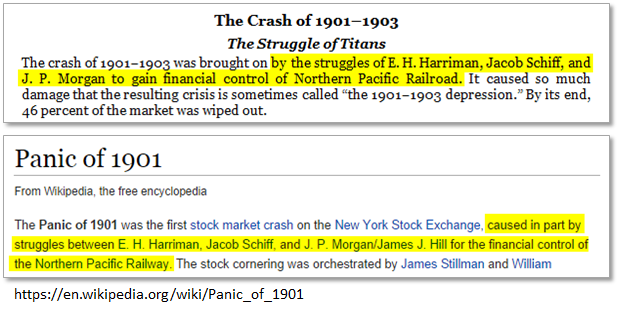
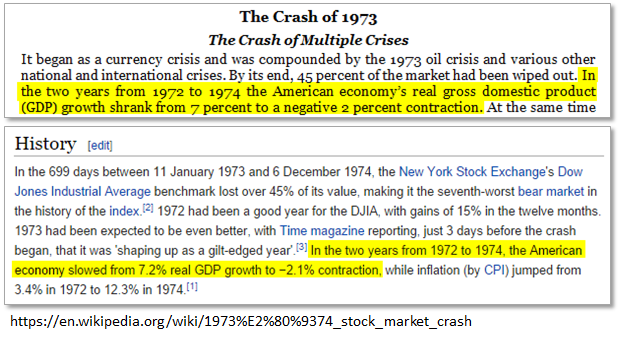
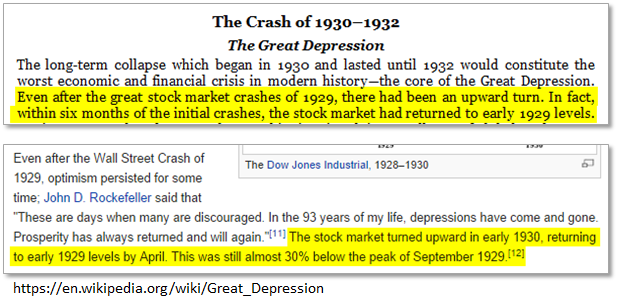
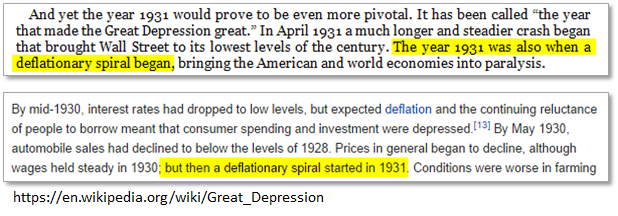
Concerning the use of Wikipedia as a primary source for research work, Wikipedia itself notes the following in an essay:19
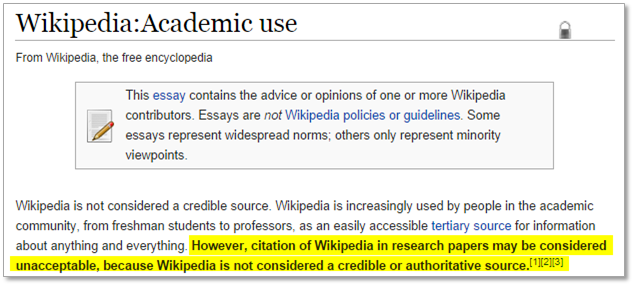
Even the founder of Wikipedia, Jimmy Wales, has been quoted as saying the following concerning the popular website:20

To be fair, not all of the facts cited in The Mystery of the Shemitah seem to have come from Wikipedia, and yet in some of those cases, there are serious (potentially even legal) issues because of similar or nearly exact wording combined with the lack of documentation. Here is one example.
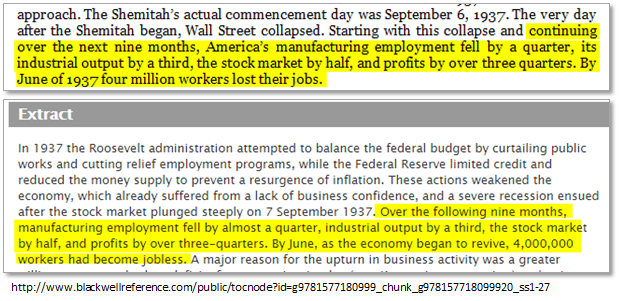
Beyond the lack of documentation for facts and figures, there are a total of nineteen graphs in The Mystery of the Shemitah, none of which have any citation for the source of the graphs or for the data used to create the graphs. The following are three graphs found in the book.
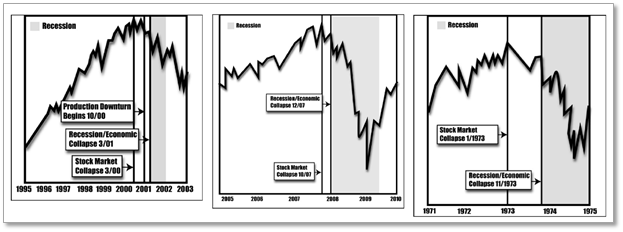
The first thing that should catch the reader’s attention is the lack of vertical scales with units for reference points. Depending on the amount of compression or expansion done on the vertical scale, such graphs, just like with statistics, can be made to support virtually any theory or conclusion if there is no scale for context. The following graph perfectly illustrates the problem, because based on Cahn’s book, one would think that the stock market fluctuations on the proposed seven-year cycle was producing economic cataclysms of profound proportions. However, as can be seen here, when viewed in the full proportionate context of the rises, as well, the downturns in both duration and amount are relatively minor.
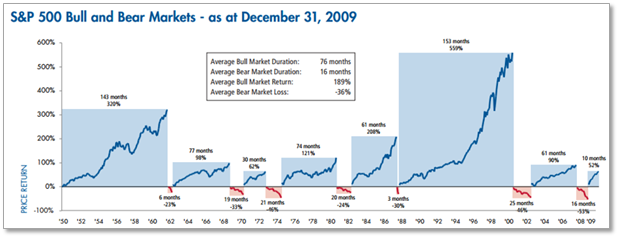
Discernment Tip #1: Beware of an author who fails to document assertions and fact-claims when they are critical to his argument.
Interpretations in primary sources can easily be presented as facts in secondary sources, particularly when things like history and economics are involved. Therefore, the context of the original information can be vital to correctly understanding what is being presented.
An author should never leave the burden of proof upon his readers by forcing them to do the research he should have provided for fact-checking purposes.
Discernment Tip #2: Someone has rightly said that if you torture statistics long enough, you can get them to confess to anything.
Be very careful when an author uses statistics to lay the primary foundation for his theories. Statistics, like history and economics, can usually be interpreted in a variety of ways. Whenever an author bombards his readers with statistics to prove his point, this should be an immediate red flag to dig deeper to avoid being caught up in the drama of the “overwhelming evidence.”
_________
Marketing “Fear”
Intentionally or not, these men are marketing “fear”—and “fear” is selling at a brisk pace in today’s troubled world.
Is this assessment too harsh? Consider this:
As noted earlier, Jonathan Cahn and Mark Biltz have recently made regular appearances on The Jim Bakker Show. The program that aired on September 16, from which the previously cited exchange between Biltz and Bakker is taken, is fifty-eight minutes long. Of that fifty-eight minutes, the entire last twelve minutes, 20 percent of the show, are devoted exclusively to promoting “survival” products and food packages. In order for the ministry to maintain 501(c)3 non-profit status with the IRS, this survival gear cannot be sold, so these things are “given away” for “donations” of up to $3,000 for a package that is supposed to feed two people for up to two years.
The video below is the ten-minute segment at the end of the September 16, 2014 The Jim Bakker Show. It is difficult to not characterize this as anything but gratuitous, shameless marketing.

Naturally, the promotion of survival products doesn’t happen only when Mark Biltz is on the program, but is part of every show. On the September 2, 2014 show with Jonathan Cahn, the survival equipment and food advertisement is in the middle of the program, which can be seen here.
These men are no less culpable than Jim Bakker, even though they are just guests. They are more than just guests—they are regular fixtures on the program. They are a vital part of the success of The Jim Bakker Show. And they are helping him to get rich by trying to create a market of fearful people and then selling products to this very market. When Mark Biltz and Jim Bakker team up to warn their audience that they have one year until the Tribulation begins—and when at least Biltz and Cahn will not allow themselves to be pinned down on the timing of the Rapture (meaning that they hold open the possibility that the church may go through it)—and then they turn around and promote these survival products with slick marketing techniques, this is nothing less than peddling the Word of God.
Now thanks be to God who always leads us in triumph in Christ, and through us diffuses the fragrance of His knowledge in every place. For we are to God the fragrance of Christ among those who are being saved and among those who are perishing. To the one we are the aroma of death leading to death, and to the other the aroma of life leading to life. And who is sufficient for these things? For we are not, as so many, peddling the word of God; but as of sincerity, but as from God, we speak in the sight of God in Christ. (2 Corinthians 2:14-17)
Discernment Tip: “For the love of money is a root of all kinds of evil, for which some have strayed from the faith in their greediness, and pierced themselves through with many sorrows.”
Only God knows the heart and judging motives is not our prerogative. However, when massive amounts of money are in play, it can be difficult for even the most spiritual, well-meaning people to keep their bearings—at least for a time. This is not an accusation and we can only hope that this hasn’t happened in connection with the current Shemitah / Blood Moons debacle.
__________
Closing Thoughts
We don’t know God’s timetable and so we can’t know when the Rapture will happen or when the Tribulation will begin. The Rapture could take place before you finish reading this sentence. It may happen on the Feast of Trumpets in 2015. Or, it could be long after the last lunar eclipse in the current Blood Moon Tetrad.
The only thing we know for certain is that the Rapture will take place (1 Thessalonians 4:13-18) and that we must be ready when it happens. Moreover, the only way to be ready for the time when all believers will be caught up to meet Christ in the air, to be with Him forever, and to avoid going through the horrors of the Tribulation as God unleashes His wrath upon the earth, is to have a personal relationship with Jesus Christ.
Jesus Christ, the Son of God, God in the flesh, became a man, and lived a perfect life in complete obedience to God the Father. He willingly offered Himself up as a perfect sacrifice for the sins of all men, taking the punishment we all deserve, shedding his blood as a payment for our sins, and dying in our place on a Roman cross. He offers salvation, the sure hope of forgiven sin, to anyone who will turn to Him in faith, trusting in Him and His shed blood and His sacrificial death.
And because He arose from the grave on the third day, His offer includes not only the sure hope of forgiven sin, but also the sure hope of eternal life as a free gift of God’s grace to all who believe.
__________
For those who might be interested in a more in-depth treatment of the Shemitah theory as presented in Jonathan Cahn’s first book, The Harbinger, you may want to consider reading my book: The Harbinger: Fact or Fiction? – available in both Kindle and paperback versions.
By David James on September 19, 2014




